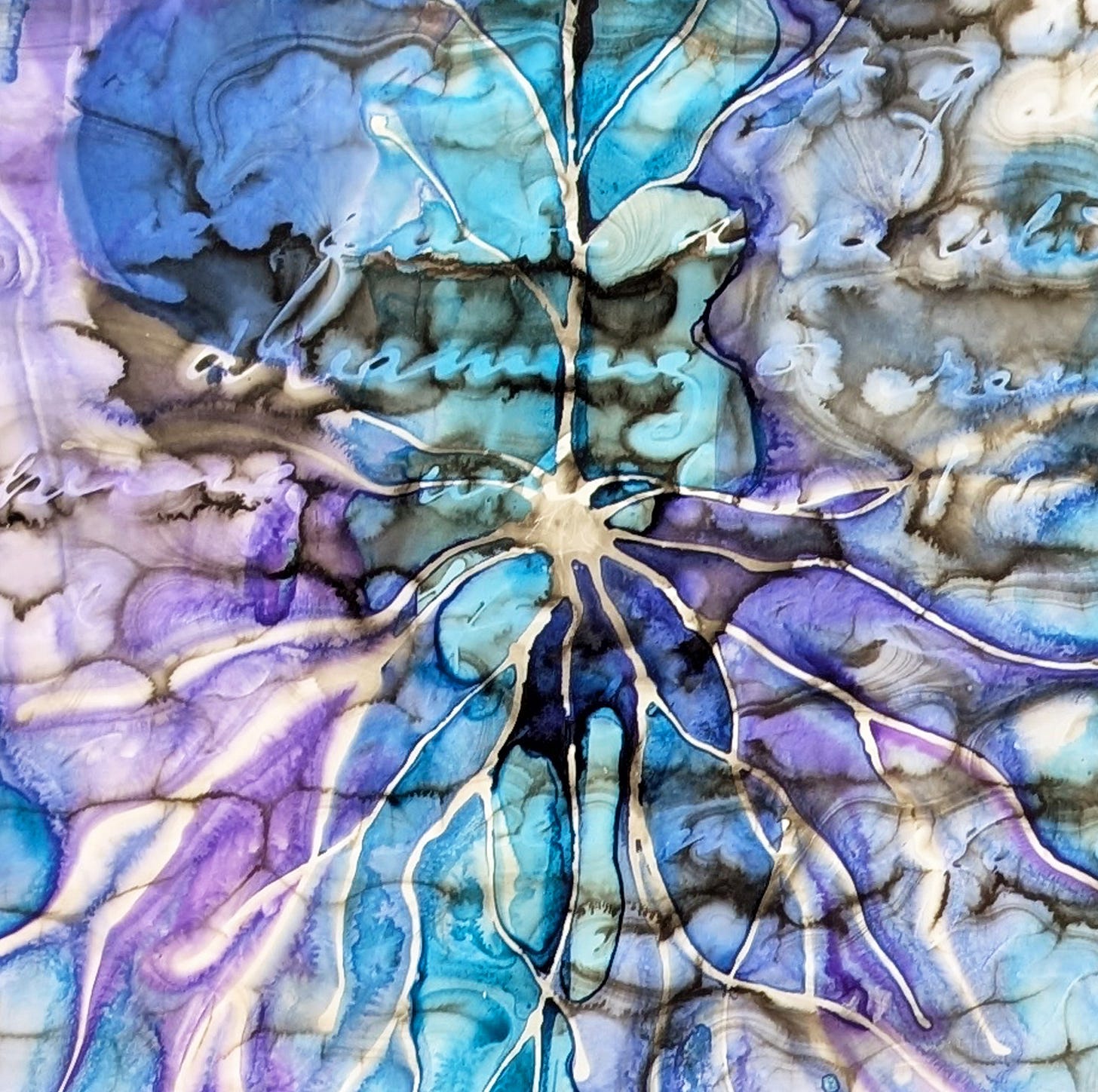My brain has been entirely elsewhere (!!!ELECTION!!!) for the past two weeks, so I was slightly stunned when I got a google reminder that I was supposed to publish a newsletter the day before yesterday. I thought about waiting another week, but I figured that anything published next week would be completely buried under the avalanche of !!!ELECTION!!! News. So here we are! Let’s talk about something less stressful.
I’ve written before about paintings with half-legible text, by myself and others, and reflected a bit on art that requires your brain to perform two different tasks at once – seeing and reading. Now a new study hints that we may comprehend some types of language as instantaneously as we decode visual images.
In an article in The Guardian, Prof Liina Pylkkanen, co-author of the study from New York University, said most theories of language processing assume words are understood one by one, in sequence, before being combined to yield the meaning of the whole sentence.
“From this perspective, at-a-glance language processing really shouldn’t work since there’s just not enough time for all the sequential processing of words and their combination into a larger representation,” she said.
However, the research offers fresh insights, revealing that people can detect certain sentence structures in as little as 125 milliseconds (ms) – like the blink of an eye.
Thirty-six study participants were shown a three-word starting sentence that flashed up for 300ms, followed by a second sentence that was either identical or different by one word. They then indicated whether the sentences matched.
The results showed that participants made significantly faster and more accurate judgments on whether the sentences matched when they contained a subject, verb and object – such as “nurses clean wounds” – than when they contained a list of nouns such as “hearts lungs livers”.
But the effect disappeared for sentences with less typical structures, for example “wounds nurses clean” or “wounds cleans nurses” – which Pylkkanen says hints that these sequences do not provoke the same sentence-recognition effect.
Although this small study is thought-provoking, three-word sentences flashed on a screen are hardly analogous to Cy Twombly’s poetic scribbles or Mark Bradford’s layered legal prose. The three-word sentence experiment did, however, remind me of another visual artist who plays with words: Christopher Wool.
In his best-known works, Wool used sign-painter’s enamel to stencil words on white aluminum, creating seemingly simple compositions that can truly mess with your brain.
Wool, an American painter active since the 1980s, was not the first artist to incorporate words into his paintings. But, as The New Yorker’s Peter Schjeldahl put it,
“Wool made it new. He merged the anonymous aggression of graffiti with the stateliness of formal abstract painting.”
“Selecting words and phrases that appealed to him, he leached them of personality, by using stencils, and of quick readability, by eliminating standard spacing, punctuation, and, in one case, vowels (“TRBL”). The effort required to make out the messages may be rewarded, or punished, with a sting of nihilism: “CATS IN BAGS BAGS IN RIVER” or “SELL THE HOUSE SELL THE CAR SELL THE KIDS.” (The latter is from a deranged officer’s letter home in “Apocalypse Now.”)
Once read, the words don’t stay read. When you leave off making sense of three stacked blocks, “HYP/OCR/ITE” or “ANA/RCH/IST,” they snap back into being nonsensical graphic design. We’re not talking about a major difficulty here, but just enough to induce a hiccup in comprehension, letting the physical facts of the painting preside.”
“Once read, the words don’t stay read,” is a fascinating thought. Schjeldahl here refers to Wool’s use of words as visual forms, but I think this could apply to many ways we read words that then don’t stay read – for example, reading these words on a screen versus on a piece of paper. Many studies have indicated that reading comprehension and retention is much higher when text is read from paper rather than a screen. Or consider the physics textbook you read in high school: if you’ve forgotten all of it, did it stay read?
Both the NYU study and Schjeldahl’s essay on Christopher Wool point to the same conclusion: our brains are primed to expect things like they’ve seen before, and it takes only a small divergence from the norm to unsettle them.
Finally, in an odd way, Wool’s very modern work recalls antiquity. Many works in classical Greek and Latin used scriptio continua, essentially meaning that there were no breaks between words, which were often in all caps. Text in this form was not only difficult to read (the task was often left to professional performers) but open to many interpretations. It took something like a thousand years before this system was completely abandoned and spacing between words became standard. And then another thousand years until Christopher Wool decided to mess with it again.
And now a word about me:
I’ll be having a pop-up exhibition of my work at Artists and Makers Studios in Rockville, Maryland on Friday, November 1, from 5-8 pm. If you can’t make it, please take a look at my online shop: I’ve added lots of new paintings and a few new scarves and ties.










Yes, it's as if the meaning of texts is relayed only as they are being read, and once having done their jobs, the texts snap back into simple visual forms again. As in your school books, they faithfully relayed information then but have stayed "closed" ever since.
The idea of things “staying read” - I’m going to chew on that for a while. (I guess it stayed read?) Very cool piece!